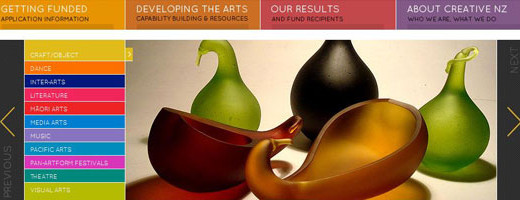Five must know techniques for effective responsive web design
0What really constitutes a good and effective design is a question whose answers have been changing over time with the development of the internet. If designers do not produce a web design which fulfils its primary purpose which is to get visitors or generate revenue, then that design is a waste. There are so many examples of companies investing in websites and then not using it, because it was not effective enough or failed in its primary purpose, despite the investment. Few visitors ended up. The website was reduced to becoming a part of the online detritus. What went wrong? What determines whether a web design succeeds?
Setting up a website is not a big deal. The technology is out there. The tools and platforms are there. Skills are available. And the costs are relatively low, compared to a few years before. But if you want your website to work effectively, you need to really look at it from many angles. What many people think is that attractiveness is there is to a great web design. If you want more visitors to your website, of course, it has to be really attractive and magnetic. But that is not just the only attribute. More important than visual attractiveness, the websites have to be really useful and rank high on utility values. In addition, it also needs to incorporate functionality which is in line with current internet marketing technology.
Responsive Web Design (RWD) is the way to go.
If you are into internet marketing, then you would know that the number of mobile users of internet has been increasing over time and hence, considerable amount of marketing effort has to be expended on mobile based media and websites. Responsive Web Design is something which would be very effective in this direction and help you to create the kind of websites which will help you reach out to your customers more.
This is the ability to ensure that your website can be accessed both on desktop as well as on a multitude of devices ranging from mobiles to tablets. Therefore, the design is such that it is responsive to the kind of output device and it has to accommodate the differing screen resolutions also. RWD does this.
This technique is based on the principle that design and construction of the website must be dependent on the user behaviours and environment and thus the screen size, platform and orientation have to be flexible in response to this. When using RWD to design web sites, provision has to be there for flexible grids and layouts, images and media and CSS has to be used intelligently in response to user queries.
Responsive Web Design arose from the concept of Responsive architecture, a concept of space adjusting in accordance to the volume of people passing through it. RWD has also incorporated more advanced features such as scrolling, SVFG artwork, JQuery slideshows and advanced animations to make your website more powerful and interactive.
1. Media Queries
Effective and intelligent use of CSS3 in media queries is a way of making the website more responsive and user friendly. CSS3 is the software that is powerful enough to allow developers to separate their content (page markup and functionality in java) from the presentation of the content and is able to manage the use of different layouts for the same content using the media queries. Thus, this is a vital technique of designing great web sites.
This is a great improvement over the previous strategy of web design where when the user accessed the same content on the website through different devices, the browser would identify the source of the query and the user would be re-directed to different sub-sites under the same domain name, which showed the same content. This was a colossal waste of time and resources as well as twice the amount of engineering efforts.
Through the use of media query, you can specify different styles for the same content by asking the browser different questions such as device width, device pixel density and the orientation (horizontal or vertical). A media query, would thus involve the creation of a CSS Style sheet which would define styles for all UI elements that are dependent on screen size/pixel density and orientation of the device.
2. Scaling of site layout
Another very important part of producing great, effective and responsive web designs is to ensure that the layout of your website is such that it is adjustable and scalable in response to requirements. Traditional websites have fixed layouts but with the increasing use of internet over mobile technologies and greater business transactions being conducted on it, you have to ensure that your site layout is suitably created.
The widely used site layout consists of a set of grids or rectangles, with each representing a certain portion of the web page such as header, footer, site navigation, content etc. The layout (and hence the grid dimensions) should ideally be adjustable in response to the amount of content as well as screen size for true responsiveness. It should be flexible. A powerful web site design would ensure this, rather than restricting the layouts to two or three options.
In addition, designers can ensure that they give priority to creating mobile friendly websites and then incorporating features which would ensure these sites to be seen on desktops, rather than the other way around.
3. Framework responsiveness to bugs
One of the most important things which a great website needs to have is that it should be tested free for bugs. Errors or bugs, which go undetected, can cause problems in site loading and being viewed on the respective devices. So creators and designers need to check the website for glitches and to ensure that nothing is “broken or out of place”.
Errors can be parse errors, bad ideas and broken user flows- this can disrupt the smooth functioning of the website. Designers need to sit down and visualise potential user behaviour of each part of the website, with different functions and imagine possible loopholes and keep testing and making corrections to ensure that all parts function seamlessly. You may not be able to control all glitches but you can definitely keep them to a minimum.
Great web design is not about just creating a representative web site with smooth and sleek responsive web design but also ensuring that flaws are checked for, tested, ironed out and improved upon. So the website’s framework needs to be continuously tested and checked for bugs. Always remember, it is the user that comes first.
4. Floats for layout
CSS based floats are a great way to set out your site layouts. They are a departure from the time consuming usage of tabled layouts, which was in vogue a long time before. Helpful as they are, they can be an irritant if they are not used properly and can cause problems with aesthetics as well as accessibility issues. Here, we discuss how floats are used and some alternatives.
Floats are those bits of text and image; you may see floating around a website. The text is wrapped around the image and the float function is applied to it in the coding; this would help the float, do what it has to do.
While images are the most commonly target of floats, many elements can be floated. The “float” is technically a small box that shifts either left or right of the line of the program and is configured to have content floating on its right or left side, depending on where the float is orientated. Values can be added to the float to define it such as left, right, inherit. In the context of the HTML script, floats are written on top of each other but when they behave, they will jump out.
Floats can be used for layouts but it has to be used in conjunction with commands such as clear, so that the layout can be properly created, else trouble may arise. Some of these problems include interfering with the flow of a document and this can create problems for responsive web design. The alternative solutions are to use display property, in combination with float and position in order to minimise these flow problems.
5. Use SVG artworks
Last but not the least, with all the responsive and intelligent functionality, your website has to display and make use of tasteful graphics. Scalable Vector Graphics provide this and they are supported by all current browsers in use. SVG is an XML based file format which helps in the creation and use of great quality graphics. Newer browsers straight away make use of SVG while older browsers may need Flash to display it. The main advantage of using SCG graphics in your website instead of others such as Canvas is that, it is independent of resolution of the screen. So regardless of the screen size and pixels, the image would be displayed the same way. So, it can be used across a wide range of platforms and thus supports cross platform inter operability.




